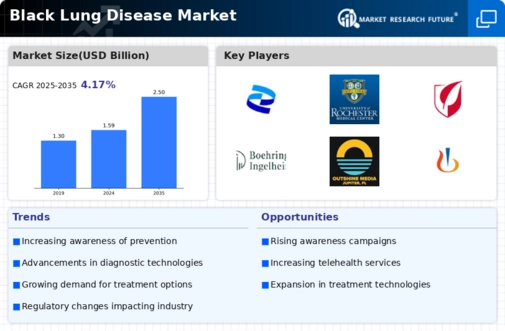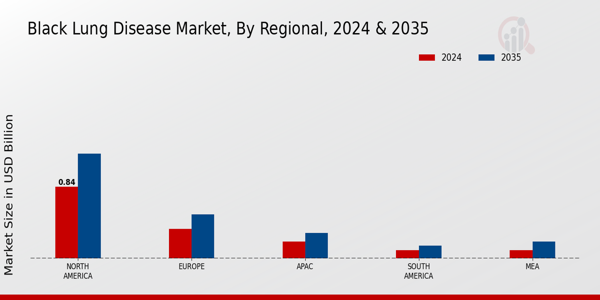Market Trends
Key Emerging Trends in the Black Lung Disease Market
Coal mining's occupational danger affects black lung disease therapy. Long-term coal dust exposure is connected to black lung disease, often known as coal workers' pneumoconiosis. Despite mining safety improvements, this occupational risk drives need for effective therapies. Black lung disease is rising, especially in coal mining areas. This increase in incidence is due to poor dust management, inadequate protective equipment, and exposure to finer coal dust particles, demanding a fresh emphasis on prevention and treatment. Diagnostic tools for black lung disease are improving. HRCT scans and other imaging modalities help healthcare practitioners discover the condition early and accurately, allowing them to intervene and control it. The black lung disease market emphasizes prevention. Black lung disease may be reduced and its effects mitigated by strict workplace safety enforcement, dust control, and coal miner respiratory gear. Rehabilitation and support are crucial to black lung disease management. Pulmonary rehabilitation helps enhance lung function, along with symptoms, and also overall well-being. To treat illness symptoms and consequences, oxygen treatment and medicines are used. Black lung disease worker rights advocacy is growing. Awareness of the disease's effect on coal miners has led to requests for better working conditions, healthcare, compensation, and assistance for afflicted persons and their families. Black lung disease treatment is increasingly using telemedicine for consultations and follow-up. This method is useful for remote miners who have trouble getting specialist treatment. Government laws and regulations shape the black lung disease market. To reduce black lung disease, strict coal dust laws, mining safety requirements, and proper healthcare and compensation for afflicted workers are needed. Global collaborations are helping to study and treat black lung disease. Healthcare institutions, government agencies, and advocacy organizations are working together to uncover risk factors, enhance diagnostic methods, and create new occupational lung disease therapies. Support services for black lung disease patients are developing due to their mental effect. Coal miners with black lung disease suffer emotional and social issues that counseling, mental health assistance, and community initiatives address. Market trends are affected by environmental and occupational health measures. Cleaner energy, coal reduction, and sustainable mining are being promoted as ways to reduce black lung disease and safeguard workers.















Leave a Comment